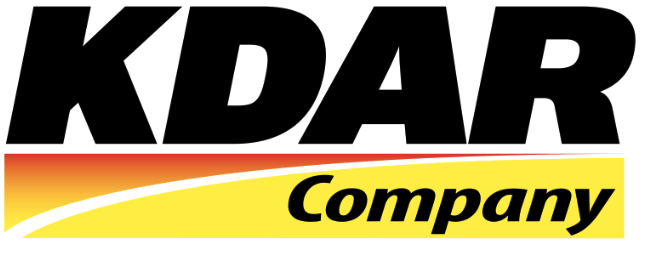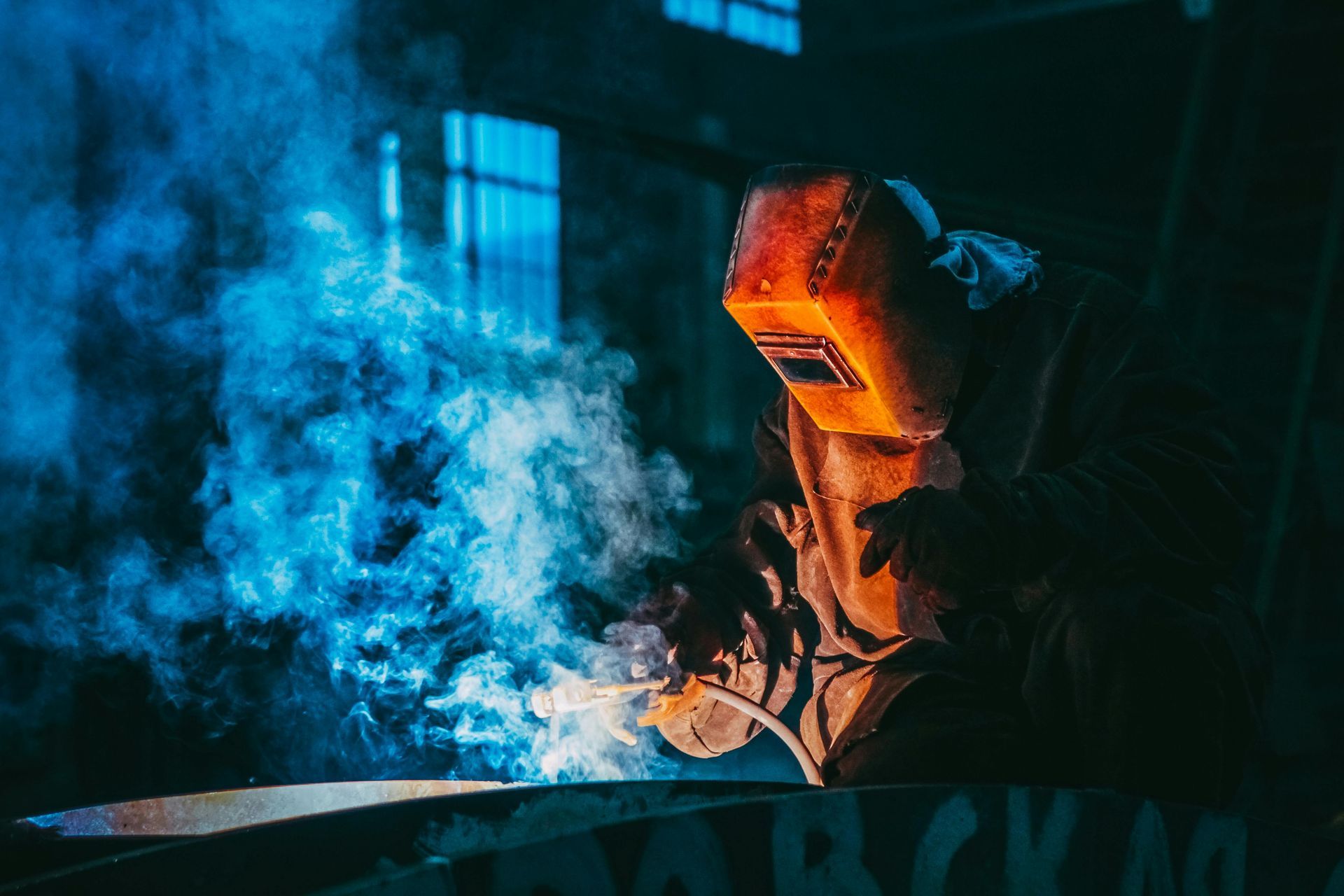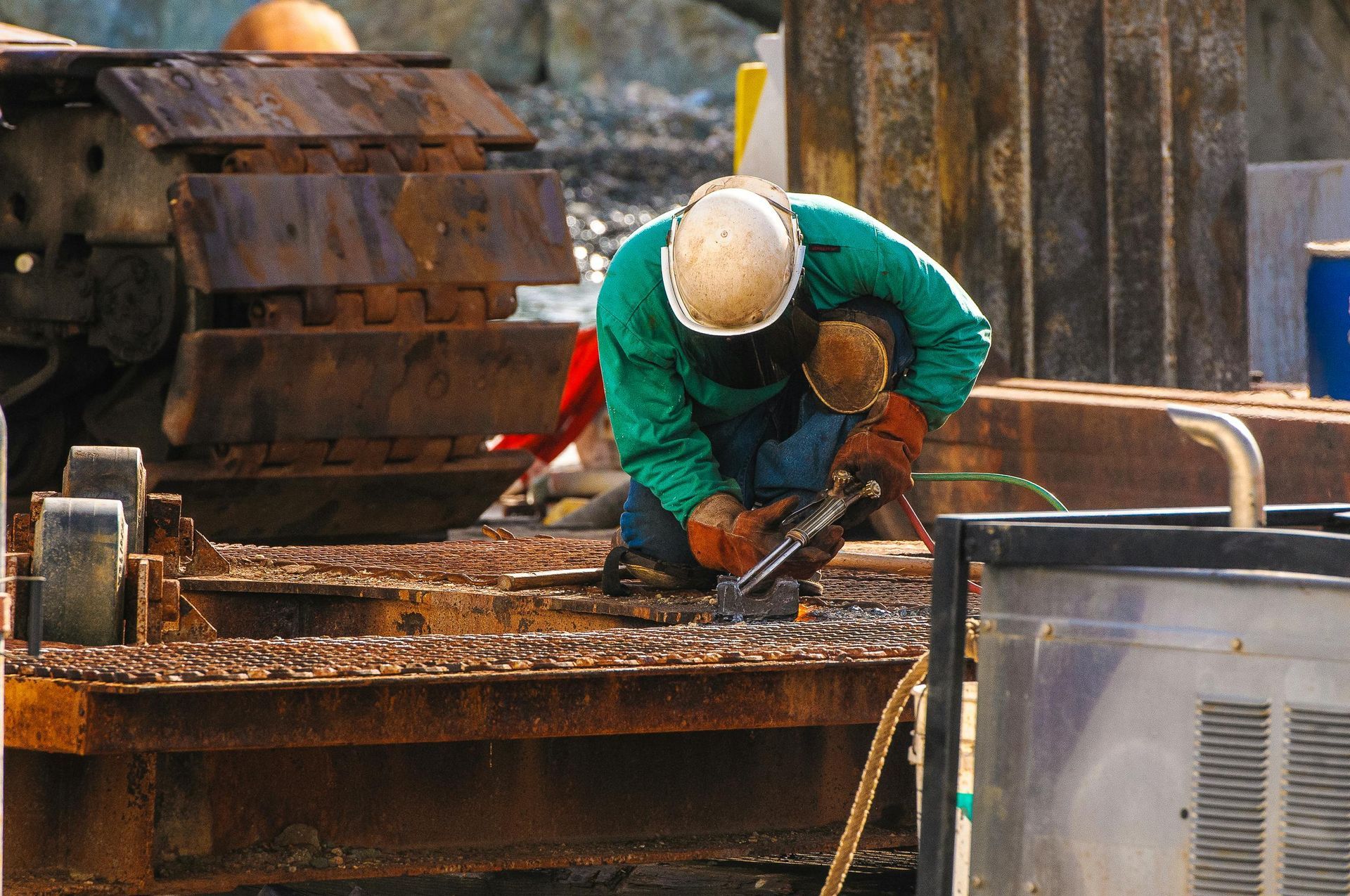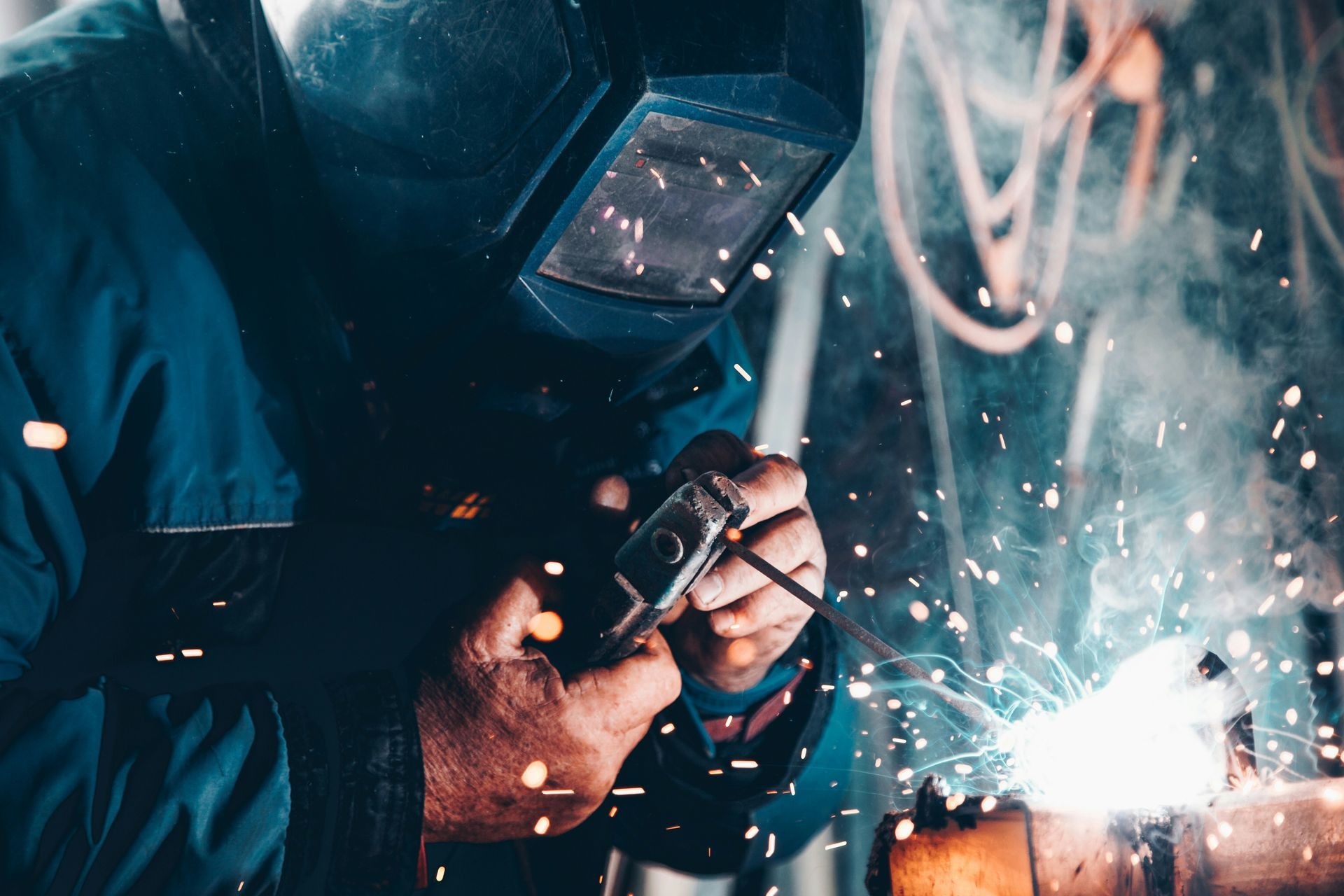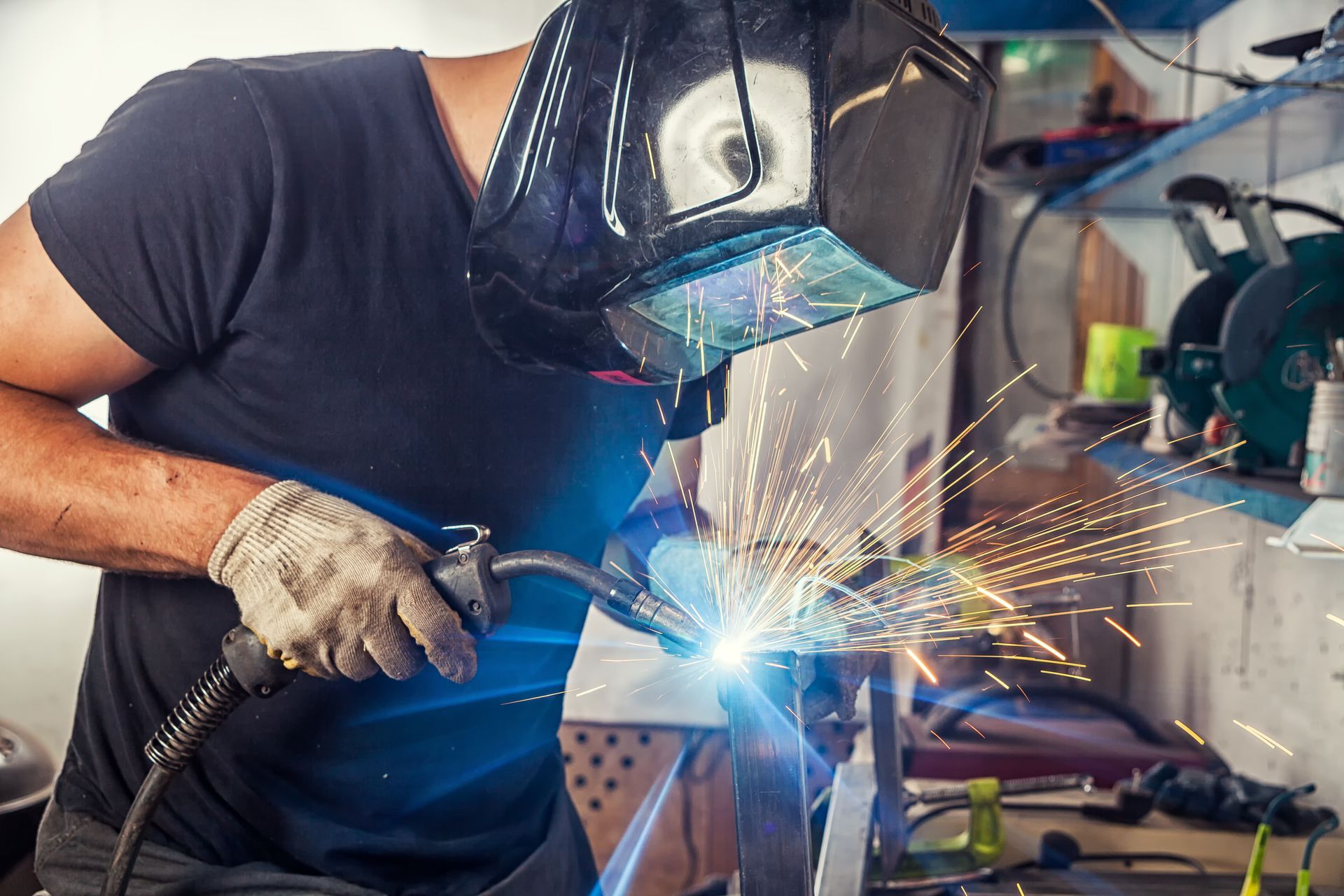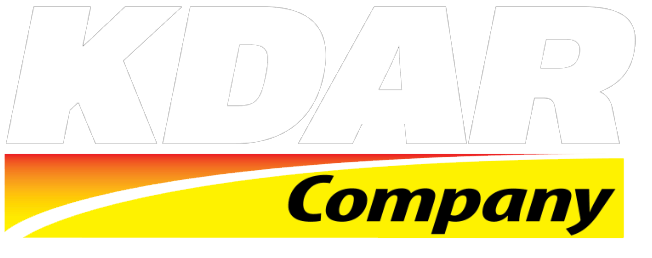A Guide to Welding Safety
Although welding is far safer now than it was 50 or even 20 years ago, there are still some inherent dangers that come with the job. Whether you’re brand new to welding or a seasoned welder, it’s important to revisit the basics of welding safety.
Biggest Safety Risks
Many aspects of welding safety have been addressed with innovative technology, but arc welding still presents some safety hazards.
- Fire: Arc welding happens at extremely high temperatures and sparks can fly. Nearby paper, clothing, and other flammable items can quickly catch fire and spread.
- Electrocution: Welders work with machines with voltages of up to 575 volts which can be deadly, but even small shocks could startle the welder and lead to injury.
- Fumes: Metal coming into contact with a welding arc creates toxic fumes that we can’t see and can cause several health problems like fume fever or even lung cancer.
- Burns: A welding arc is so hot that it can burn skin without even contact, called flash burns resulting from UV ray exposure.
- Heat: The welding environment is sweltering, and welders can suffer from heat-related illness and heat stroke without the proper precautions.
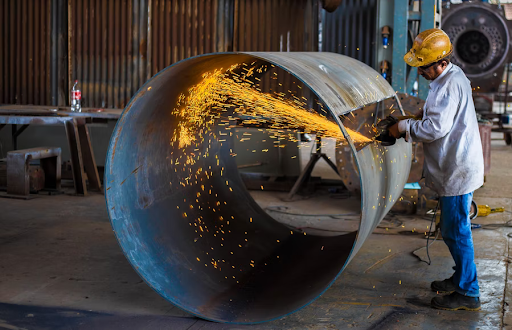
Welding Safety Tips
Knowing which welding risks are the most common is the first step toward protecting yourself and others. Considering these welding safety tips is the next step.
Face and Head Protection
Eye injuries are perhaps the most common in the welding industry, and a welding helmet can help create a solid barrier for protection. Several types and styles of helmets are available, so it’s easy to find the right fit.
Top-Quality Gloves
Welder personal protection equipment should center around the proper gloves – and no cutting corners here. They should be lined with Kevlar to protect your most valuable welding assets, your hands. Make sure that your gloves are dry before every time you handle equipment to prevent electrocution.
Gear and Clothing
Welding is hot and sweaty work, and it can throw off lots of sparks. This means that the proper clothing can make or break a welder’s comfort. Choose industry-specific, fire-resistant, and well-fitting clothing to wear while you’re welding.
Ventilation
Heat and fumes together in small spaces are already volatile, but that’s especially true in poorly ventilated areas. The welding workspace needs to have robust, clear airflow to help regulate the temperature of the room and the body temperature of the welder.
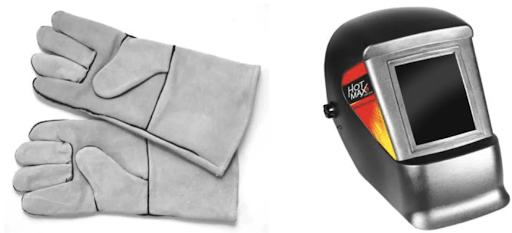
Emergency Prep
Even the safest welders can experience an emergency from time to time, and it’s important to be prepared. Training and continuing education on safety best practices are essential, along with equipping the workplace with tools to help with emergency response.
Welding safety equipment is essential to welding best practices for novice welders and professionals alike. Ensure your retail store is stocked with the best welding safety equipment by turning to KDAR Company. We offer a wide variety of welding helmets—from basic wide-vision helmets to colorful auto-darkening helmets.
Our Hot Max product line also includes helmet replacement lenses, bulk goggles, safety glasses, helmet magnifying lenses, welding gloves, grinding shields, hearing protection, and dust masks. When you order wholesale from KDAR, your customers will have everything they need to support their welding practice or business in one convenient place.
Contact us today to get started!
